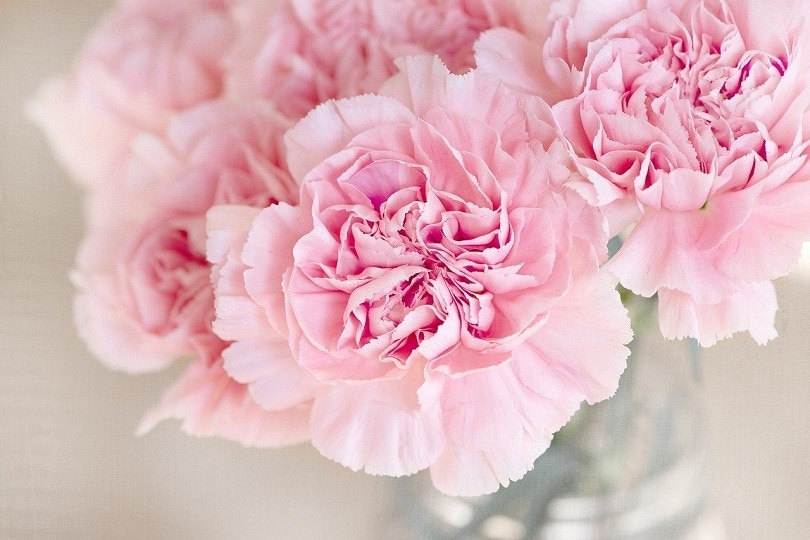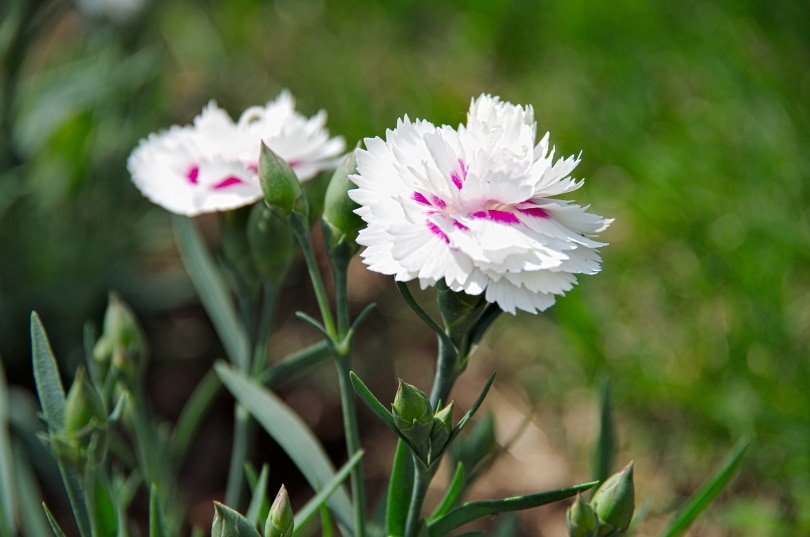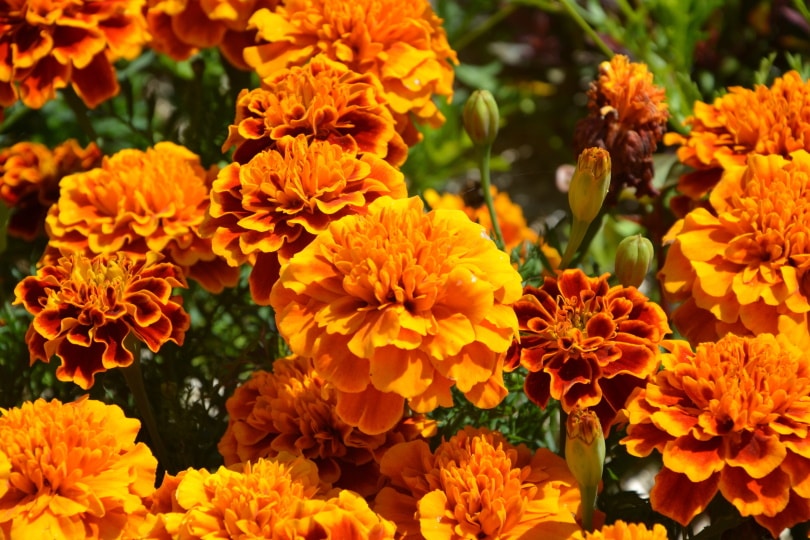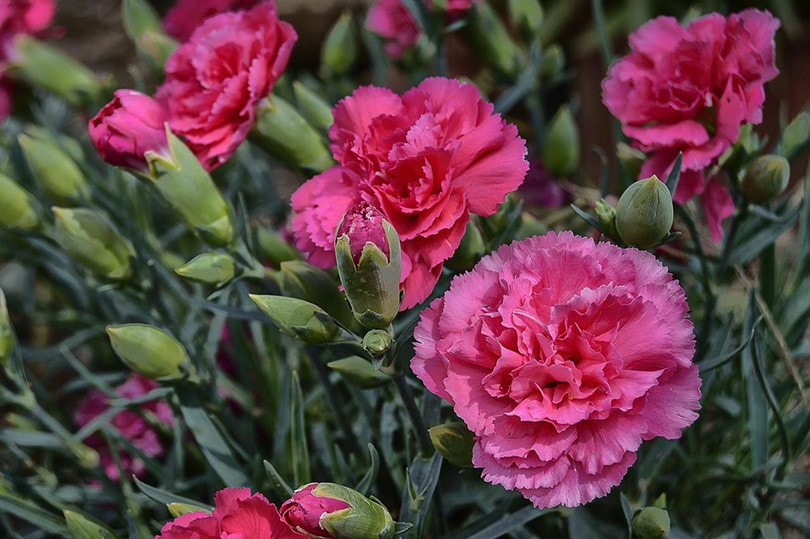What Is the State Flower of Ohio? History, Medicinal & Symbolism
-
Ashley Bates
- Last updated:

One of the very great things about America is that they celebrate each state with a series of symbols that exemplify the beauty of nature. In Ohio, they selected their state flower, and it just so happens to be one of the most beautiful you could see. Ohio chose the lovely red carnation as the state flower in 1904.
If you were curious about the state flower, we’re happy to tell you all about the red carnation. Let’s learn how it became a state flower and what makes it a magnificent flower to have in your own garden.
Ohio State Flower
Apart from its beauty, it was a favorite from our past president William McKinley, who was an Ohio native. President McKinley loved carnations so much, you wouldn’t catch him without one of these red blooms in the buttonhole of his suit.
When President McKinley was assassinated, Ohio chose to honor the president by selecting the scarlet carnation specifically for the state flower. From then on, it coincided greatly with our state theme—red and lovely—just like our sports team colors!

The Carnation
| Scientific Name: | Dianthus caryophyllus |
| Flower Type: | Perennial |
| Varieties: | 15+ |
| Scent: | Spicy, balmy |
| Popularity: | Abundant |
The carnation is an herbaceous perennial plant, meaning it comes back every year. These gorgeous blooms come throughout the spring and summer, but the clump stays evergreen.
People have admired the carnation flower for the past 2,000 years. They were once the most popular flower choice in the entire world; most of them are sold in the US and South America. Rather than being red originally, carnations were pink and purple.
They were first cultivated in ancient Greece and Rome despite their popularity today. They were a common choice for ceremonial crowns or garlands and were used in lavish setups. However, with selective breeding, they take on a variety of beautiful colors, including the red carnations we Ohioans love.
Many growers love carnations for their long vase life, as they can be enjoyed in bouquets for several weeks without wilting. Both useful and beautiful, these flowers will continue to inspire future generations.

Growing Carnations
Carnations are perennials that will keep coming back once they are planted. They prefer well-drained, slightly alkaline soil, between 6.7 and 6.9 pH. While they can be somewhat shade-tolerant, they prefer to have lots of sunlight, preferably between 4 and 6 hours per day.
You should start your carnations indoors 8 weeks before the last frost. Once you see sprouts, it won’t be long before these new lifeforms make their way into nutrient-rich soil.
Since carnations are perennial flowers, they will come back year after year. So, make sure that when you’re selecting a spot to plant them, you won’t mind if they continue to come back long after the first year.
Appearance
Although the red carnation is Ohio’s state flower, it also comes in red and white selections—equally stunning and lovely. They grow in even harsh conditions, blossoming into multi-layered blooms creating a papier-mache look.
Many boutiques and flower shops use carnations to make colorful creations. Carnations are known for their long, sturdy stocks, making beautiful long-stemmed flowers for vases and other displays. In fact, they are often the most popular flower to use in these scenarios, along with their competitors, roses.

Medicinal Properties
Carnations aren’t just beautiful; they have medicinal properties as well. Carnations are entirely safe, from flower to roots. Different parts of the plants serve other areas of treatment.
Carnations contain substances inside that have effects on inflammation and swelling. Carnations are sometimes used to treat wrinkles, eczema, skin rashes, and other topical treatments. If you use the oil from a carnation, it can have other therapeutic benefits.
If you make a carnation into a tonic, it can also calm an upset stomach. It has often been used for the treatment of stress and anxiety. When taken in tea form, the properties of the dried tea leaves have been shown to treat mild depression and overall fatigue.
Carnations were used in Chinese and English cultures to control stress-related issues. The Chinese used this type of flower as a Zen calming tool, while other Europeans decided to use it for soothing effects on the mind, body, and soul.

Additional Symbolism
The carnation has long since been associated with love. Therefore, it is commonly found in bouquets, weddings, and other romantic settings. It isn’t uncommon to see a carnation on a corsage.
While it is most commonly associated with positive things, that is not the case in France. In France, these flowers are considered bad luck to the bearer. Korea also uses carnations as a divination tool to tell the fortune of young maidens.
That’s not all! The color of the carnation tells a lot about its deeper meaning. The scarlet carnation, an Ohio State flower, represents true love in the grandest form.
In Christianity, the carnation represents a mothers’ eternal love. This signified Mary’s immense affection for Jesus when he was carrying the cross. These days, it’s equally associated with this type of adoration, though the legends have an element of sadness.
In addition to all the folklore, carnations are also January’s birth flower.
 Conclusion
Conclusion
So now you know that Ohio chose the carnation in loving memory of President William McKinley. McKinley was an Ohio native who adored red carnations specifically. You could not catch him without one in his buttonhole.
But carnations go beyond that, charming the world over with their beauty and medicinal uses. That’s all the more reason to love this gorgeous springtime bloom.
- See Also: 25 Types of Trees in California
Featured Image Credit: Pezibear, Pixabay
Contents
